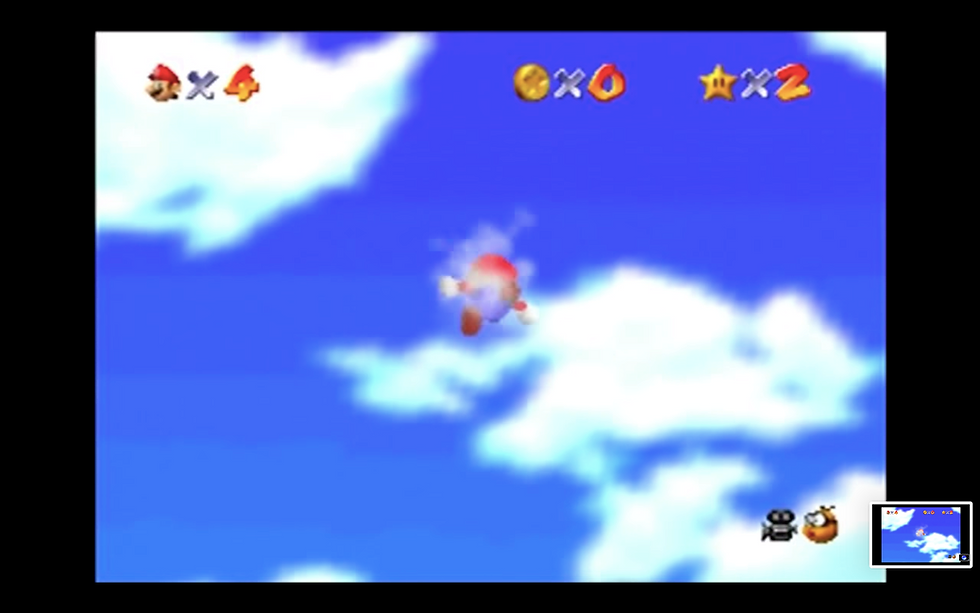Game Review: Teenage Mutant Ninja Turtles IV: Turtles in Time
- Brooke Werdlow

- Oct 18, 2019
- 4 min read
My retro game of choice was the 1992 classic Teenage Mutant Ninja Turtles IV: Turtles in Time. Developed and published by Konami and Ubisoft as both an arcade game and for the Super Nintendo Entertainment System, the game features the well-known crime-fighting turtles Michelangelo, Leonardo, Donatello, and Raphael as they take on their nemesis Shredder and his lackeys throughout the streets of New York City, but also around the globe as they travel back in time. The storyline of Turtles in Time is introduced by a cut scene of reporter April O’Neil and tourists looking on in horror as the Statue of Liberty is stolen. The “camera” pans out and reveals the turtles and their sensei Splinter crowded around a small tv set while Shredder chuckles maniacally. “Hey Shredder, bring that statue back, you bloated beanbag!” states a text box at the top of the screen before fading out to the actual gameplay.
Turtles in Time functions as a side-scrolling, fighting game set initially within the backdrop of New York City. With a one-player, two-player, time trial, and versus mode, the game offers various experiences that all connect to the central plot: returning the Statue of Liberty. The player is given choice of which turtle they desire to be—each turtle is equipped with a different weapon, and has different strengths and weaknesses. There is no in-game tutorial of the controls, instead players must read the manual or, more likely, figure out what works as they are thrust into the action—the arrow buttons move throughout space, y to strike, b to jump, y+b to jump strike, and a slew of defensive combinations based on the order or frequency of the player’s button pressing, such as sprinting, slamming your enemies, and throwing the opponents into the camera to name a few. Health bars at the top of the screen communicate the character’s vitality and inform the player how many lives they have left as they face groups of enemies that culminate in a “boss battle” at the end of each level.
Although button-mashing may appear to be the most effective strategy when attempting to defeat enemies, the game rewards strategic and attentive play by granting special moves to the characters when certain combinations of buttons have been pressed—such as holding down the control pad and y to fling opponents toward the screen. As the levels continue, the difficulty increases with more complicated bosses that require to player to learn their maneuvers in order to be able to counter them, or avoid their attacks. Curiosity in the levels is also rewarded through power-ups disguised as boxes of pizza, that increase the players’ health.

Though embarking on a superhero-like quest to retrieve an American landmark, the environment of the first few levels of Turtles in Time feels familiar—an NYC rooftop looking out over the city, a sidewalk backed by a stretch of fencing around brick apartment buildings and punctuated by manholes, and even a trip underground surfing through the sewers of the populous city. Environmental obstacles that double as advantages dot the landscape in the form of fire hydrants that can be struck to blow away enemies with water, manhole covers that the turtles can fall in or be hit by, or a cannonball that can suddenly crush both the turtles and their opponents. The environment serves to remind the player what they’re fighting for—to restore security back to the city. After defeating Shredder’s army in the Technodrome, the turtles are sent through a time warp transporting them to various locations in the past and future where the enemies change but the mission stays the same.
The rapid shift from familiarity—for the turtles fighting in their natural environment, and for the players accustomed to the Teenage Mutant Ninja Turtles verse— to the unknown adds an air of nostalgia to the gameplay, generates the desire to restore things back to the way they were. In a modern, post 9/11 world where we must reckon with the reality of national security threats, playing the game can appear to communicate the anxieties associated with the general safety of one’s day-to-day life in America. However with the game’s debut just ten years before the national tragedy, the scrambling for the safe return of the Statue of Liberty instead sends a message concerning the discomfort of change—whether that be simply a removal of a familiar landmark in your hometown, or being relocated to an entirely different place altogether, a sentiment emphasized by the title screen of the second to last level: “Where no turtle has gone before.”
“That hole’s our way home, let’s go!” reads the text across the bottom of the screen as the turtles are once again transported once again, this time to present-day (1992) New York in front of the restored Statue of Liberty. With a final battle against Shredder to reclaim the statue, and a “Cowabunga!” once the foe is defeated, the ultimate message of Teenage Mutant Ninja Turtles IV: Turtles in Time is clear: there’s no place like home.

Works Cited:




Comments